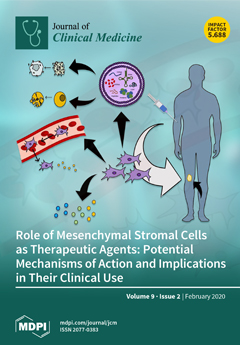Background: Liver diseases drive the development and progression of atrial fibrillation (AF). The Fibrosis-4 (FIB4) index is a non-invasive scoring method for detecting liver fibrosis, but the prognostic impact of using it for AF patients is still unknown. Herein, we evaluated using the FIB4 index as a risk assessment tool for cardiovascular events and mortality in patients with AF. Methods: We performed a post-hoc analysis of a prospective, observational multicenter study. A total of 3067 patients enrolled in a multicenter Japanese registry were grouped as first tertile (FIB4 index < 1.75,
n = 1022), second tertile (1.75 ≤ FIB4 index < 2.51,
n = 1022), and third tertile (FIB4 index ≥ 2.51,
n = 1023). Results: The third tertile had statistically significant results: older age, lower body mass index, increased heart failure prevalence, and lower clearances of hemoglobin and creatinine (all
p < 0.05). During the follow-up period, incidences of major bleeding, cardiovascular events, and all-cause mortality were significantly higher for the third tertile (all
p < 0.05). After multivariate adjustment, the third tertile associated independently with cardiovascular events (HR 1.72; 95% CI 1.31–2.25) and all-cause mortality (HR 1.43; 95% CI 1.06–1.95). Adding the FIB4 index to a baseline model with CHA
2DS
2-VASc score improved the prediction of cardiovascular events and all-cause mortality, as shown by the significant increase in the C-statistic (all
p < 0.05), net reclassification improvement (all
p < 0.001), and integrated discrimination improvement (all
p < 0.001). A FIB4 index ≥ 2.51 most strongly associated with cardiovascular events and all-cause mortality in AF patients with high CHADS
2 scores (all
p < 0.001). Conclusions: The FIB4 index is independently associated with risks of cardiovascular events and all-cause mortality in AF patients.
Full article






